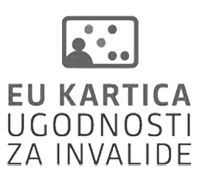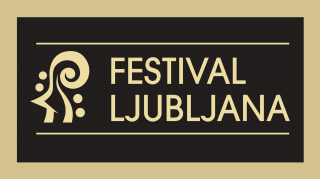Important information
Jože Pohlen, sculptor
Nelida Nemec, curator
Jože Pohlen (Hrastovlje, 1926 – Gažon, 2005) belongs to the post-war generation of sculptors who enrolled at the Academy of Fine Arts in Ljubljana in the 1946/47 academic year and from the early 1950s onwards established themselves on the Slovene art scene alongside their teachers, who left a profound mark on the sculptural explorations of the period. Pohlen, who just before the end of the Second World War in 1945 had returned home to his native Hrastovlje from Florence, where he had lived for several years after passing the entrance exam to the Istituto d’arte in 1938 at the age of twelve, formed a particularly close bond with Frančišek Smerdu, in whose class he graduated from the Academy in 1951. Surrounded by artists and teachers (Boris Kalin, Zdenko Kalin, Karel Putrih, Božidar Jakac, Frančišek Smerdu) who accepted and understood him with frankness and sincerity, he developed his gift and laid the foundations of his sculptural vision within the Slovene environment while retaining a deeply internalised sense of the cultural heritage of the Tuscan city as an important cultural centre. After graduation Pohlen returned home, like a number of other artists from the Primorska region, and took up a position as an art teacher in Koper, where in 1953 he exhibited his works for the first time together with his classmate Oreste Dequel and the painter Herman Pečarič. In 1955 he had his first solo exhibition at the Mala Galerija (“Little Gallery”) in Ljubljana and the art critic Janez Mesesnel, who followed him throughout his creative career, wrote the first review of his work, specifically of his little ceramic figures of female saltworkers. Five years later, in 1960, he was awarded a Prešeren Fund Prize for his sculptural oeuvre. His artistic path was now set: the decision to remain faithful to himself and his environment was one that had matured in him spontaneously. He described it eloquently in the following words, which neatly sum up his creative yearnings: “My art is Mediterranean, far from being continental, and yet exclusively Istrian; it would like to be an art that is purely of Hrastovlje.” He rendered homage to this area with all his works.
The post-war decades offered Slovene sculptors the opportunity to create public monuments, above all those of a commemorative nature that glorified the national liberation struggle and the country’s liberation from Fascism and Nazism. Pohlen, too, created a number of distinctive works on this theme that reflect his artistic and formal development and his intimate connection to the people and events that had shaped the history of the Istrian region. Among these distinctively individual public monuments situated in various parts of Istria are his monuments to the national liberation struggle in Šmarje near Koper (1969), in Istrian stone, where Pohlen built on a figural artistic vision; in Sveti Anton (1970), in the same material but with a much more abstracted feeling, with characteristic incisions and ridges; and in Bertoki (1976), also in Istrian stone and once again incorporating figures within a solid block, emphasising the work’s monumental nature – a characteristic that typically defines Pohlen’s works. The figure of an Istrian woman (Šavrinka, 1990) in Hrastovlje, another work in Istrian stone that was commissioned to mark the 500th anniversary of the creation of the famous Hrastovlje frescoes in the Holy Trinity Church, which the sculptor himself had discovered in 1949, also speaks of Pohlen’s great love of stone as a material and of the figure of the Istrian woman, whom in this work, as in many of his small sculptures, he modelled in such a way as to emphasise her attributes, breathing his own spirit into her with the softness of the lines of the sculpture. Beginning in the 1960s, Pohlen’s public works also include, besides a number of reliefs, more than twenty portraits of prominent figures from the Primorska region. These are characterised both by a realistic starting point and by the sensitivity with which they express the physical and psychological characteristics of the subject’s head, in many cases together with the shoulders and chest in the form of a bust (Sergej Mašera, 1966; Pinko Tomažič, 1968; Srečko Vilhar, 1979; Vojka Šmuc, 1981; and several others).
Although Jože Pohlen was above all a sculptor with a remarkable sense of form, volume, surface and space, he also produced a large number of drawings – which were more than just starting points for his explorations in sculpture – and paintings. He left an extensive legacy of drawings in a range of techniques, often using coloured ink washes and a typically forceful line that would dissipate on the wet paper. Both his drawings and his paintings, which developed over time both thematically and structurally, are characterised by an increasingly intensive use of colour.
Over the course of a creative career lasting five decades, as noted by Janez Mesesnel in the catalogue accompanying the retrospective organised by the Obalne Galerije Piran/Gallerie Costiere Pirano in 1993, Academy-trained sculptor Jože Pohlen created several hundred sculptures, thousands of drawings, more than a hundred paintings and around thirty monuments and public memorials, and wrote himself into the history of twentieth-century sculpture in Slovenia as a remarkably subtle artist who, using traditional sculptural materials such as bronze, stone and clay, interpreted with enormous sensitivity and feeling the emotions of the people of Istria, particularly the Istrian woman in the noblest sense of the word, and also the Istrian landscape and the fauna of the region, expressing these things in a distinctive sculptural language that drew on multiple sources. Pohlen took inspiration from Italian classical and modernist sculpture, with highly distinctive proportions of Mediterranean elegance and a sense of form and theme that is based on volume and space, with slight reminiscences of the depictions and interpretations of the world-famous sculptors Henry Moore and Marino Marini and, naturally, of the works of his teachers, in particular Frančišek Smerdu, who was very dear to him. At the same time, of course, he drew particularly deep inspiration from the beauties and characteristics of the Istrian landscape, a world that filled him with powerful emotions. He deeply internalised this world, which for him became the most profound of all his inspirations, feeding him, enriching him and encouraging him throughout his creative career. His Caryatids and Šavrinke (the latter a term for women from inland Istria who carried eggs and other produce in baskets on their heads to sell in Trieste) have become practically a synonym for Istrian womanhood.
The careful selection of small works from different periods that will be presented in the atrium of the Križanke complex in Ljubljana include all the most distinctive artistic elements that characterise Pohlen’s extensive oeuvre in the field of small sculpture, cover all the themes that are most typical of his work and reflect his deep emotion and, as Janez Mesesnel wrote in the monograph published to mark the sculptor’s 90th birthday, “his indestructible desire to shape, to explore, to find new approaches with which to enrich these works of art in terms of both meaning and message”, and likewise all his lasting emotional connection to the place of his birth and his intimate respect for its cultural past, which “gave birth to attempts to crystallise this emotion and this knowledge in a structure of enriched symbolism.” Throughout his career Pohlen dedicated himself most wholeheartedly to the female figure, converting it into a symbol of the Istrian woman, the symbol of the Šavrinke, although he understood and interpreted it far more broadly. The female body and soul are for him simply a source that offers him a broad opportunity for sculptural understanding and design, where his emotional and interpretative breadth are revealed in the interweaving of surfaces, volumes and spaces and in the manner of stylising and building the figure, with careful consideration of proportions and perforations. While his Caryatids and Šavrinke from the 1970s are unquestionably among his most recognised works, the female figure characterised his career from its beginnings in the 1950s. In his Caryatids and Šavrinke cycles he moved away from a reliance on a Moore-like interweaving of interior and exterior space, stylisation and perception of the parts of the body as separate volumes and took an even more decisive step towards a personal vision of sculptural questions that reaches its culmination in the Swimmer cycle of the early 1980s, where the body is flattened into an amorphous horizontal and retains an emphatic stylisation in the relief effect of the surface or skin that allows great freedom of perception and interpretation. Here the human figure approaches an abstract form that has its own existence. His animal sculptures, in which he captures the figure of a goat, an Istrian bull or a horse – the last of these often with a rider – are far more realistic and identifiable. In the decade from 1970 to 1980, his perception of this subject, one that has inspired many sculptors throughout the history of art, including the extraordinary Italian modernist sculptor Marino Marini, is sincere, primal and simplified, although the culmination of his sculptural interpretation of animals can be sensed in the stunning designs of his goat and bull figures, which he understands as part of the remarkable Mediterranean heritage that allows him to express in a poetic manner the primal, elemental Istrian world with all its ethnocultural peculiarities and characteristics.
Istria and Hrastovlje remained a starting point in terms of subject matter and content throughout Pohlen’s decades-long career, eventually crystallising his own interpretational artistic and sculptural language. And if Istria and Hrastovlje, where his works can be admired in his own gallery, have found a place on the map of important cultural heritage, it is in part due to these same works.
dr. Nelida Nemec


